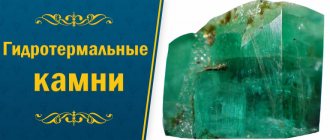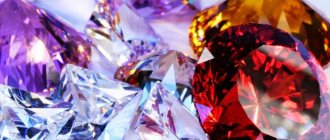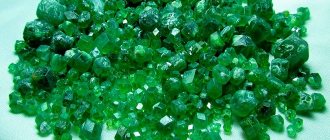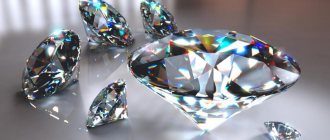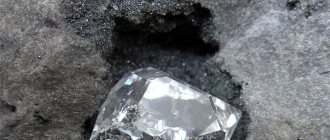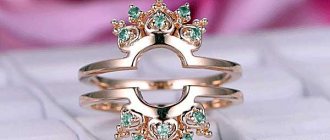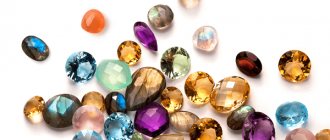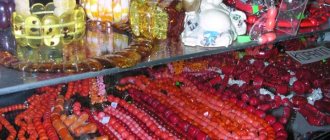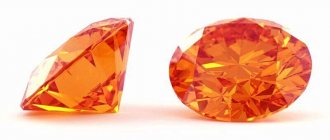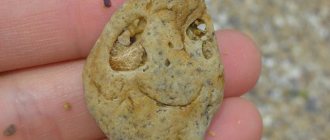People have been thinking about how to make a diamond for decades. And all because growing these stones will not only enrich the creator of the technique, but will also make them more accessible. There is an opinion that it is possible to get a diamond from graphite or coal, since they are all made of carbon. After reading the article, you will be able to figure out how real this statement is, what is the difference between the minerals mentioned, and whether it is possible to get jewelry without leaving your apartment.
A short excursion into the properties of rocks
Until the 17th century, no one suspected the similarities between coal, diamond and graphite. They never coexisted in nature. Moreover, scientists could not imagine the transformation of one substance into another. Everything changed when the English chemist Tennant conducted his experiment and found out their true nature.
Visually, it was not possible to understand this, since the breeds are completely different. Graphite does not have strong bonds and consists of flakes sliding over each other. Its main application is as a lubricant to reduce friction between surfaces. Externally, it looks like molten metal.
The coal composition includes small particles of graphite, but is supplemented with a hydrocarbon compound, oxygen and nitrogen, which gives it a denser rather than liquid-viscous form. Diamonds, in general, have one of the strongest compounds in nature. Externally, these are transparent stones, completely different from their “brothers”.
WHAT ARE ARTIFICIAL DIAMONDS CALLED?
According to the prevailing stereotype, “artificial” is something only externally similar to the original. But imitation does not always mean fake.
Nexus
Since modern grown diamonds are identical to natural ones, marketers propose replacing the established term “artificial diamond” with wording that would reflect the nature of the origin of this stone more accurately:
- "created";
- “grown in a laboratory”;
- “created in a laboratory.”
Artificially grown "diamonds"
There are other types of artificial stones. They are close in structure to diamonds, but are slightly inferior in terms of hardness characteristics and light refractive indices.
- Moissanite. In nature, it forms small colorless crystals with a diamond luster - silicon carbide. But the natural mineral is extremely rare. Therefore, when we talk about moissanite, we usually talk about artificial carbocorundum. The stone is very similar to diamond (its refractive index is even higher: 2.65 - 2.69), and the hardness is only slightly lower (8.5-9.25 on the Mohs scale). Moissanite is also heat sensitive (it changes color when heated above 65°C).
- Nexus. Stone is created by combining carbon with other components. It is almost as strong as diamond.
- cubic zirconia Created by scientists from the Physical Institute of the USSR Academy of Sciences (FIAN), after whom it was named. Cubic zirconias are used to imitate diamonds, with which they can easily be confused due to their similar refractive index (2.15-2.25).
cubic zirconia
When translated into foreign languages, cubic zirconia is often called zircon or zirconium, which is not correct, since zircon is a mineral with different physical characteristics, and zirconium is a chemical element.
Imitation diamonds
Separately, there are crystals that imitate only the appearance of a diamond. They are significantly inferior in strength and do not have a diamond shine (refractive index is less than 1.9).
- Spinel (degussite). Natural spinel is rare and has a crimson color. Therefore, to imitate diamonds, artificial stones are used, which can be given any color.
- Crystal is high quality glass.
- Swarovski rhinestones are small stones with perfectly equal edges and various optical effects.
- White sapphire is an artificial colorless sapphire with high strength.
- Rutile - its refractive index is even higher than that of diamond, however, due to the high effect of birefringence, the back edges of the crystal are clouded.
Spinel
Games with rocks: transforming one substance into another
Once scientists discovered the similarities between diamond, coal and graphite, they set out to learn how to transform one substance into another. The first experiments were successful.
It turned out that when a “gem” is heated in a vacuum to 1800 degrees, it completely turns into graphite. The same effect is obtained if an electric current is passed through coal heated to 3500 degrees. Having achieved success with these transformations, scientists set out to make an artificial diamond, and were stuck for almost 100 years.
The experiment on how to make a diamond from coal was crowned with success only in 1880 and took place in 2 stages. First, graphite was obtained by electrolysis. Then, it was placed in a steel flask, closed at both ends and heated red-hot. Sometimes, the vessel could not withstand the pressure and exploded. But, if everything went smoothly, then when the pipe was opened, dark but super-strong crystals were found inside.
WHAT IS A SYNTHETIC DIAMOND
At the end of the 18th century, scientists discovered that diamond is a form of carbon. This marked the beginning of numerous attempts to recreate the gemstone from available materials such as coal or graphite.
How did artificial diamonds come about?
Since the 19th century, many famous physicists and chemists have announced the successful completion of experiments in growing diamonds. True, none of these statements have been documented.
Only in 1927, the Soviet physicist O. Leypunsky made a breakthrough by calculating the conditions necessary for the process. Further research and experiments were carried out in parallel in the USSR, USA and Switzerland.
Synthetic diamond
HPHT and CVD
The first working installation for crystal synthesis was created and patented by the Swede Balthasar Platen. He learned his method from nature.
Natural diamonds are formed at depth, in the hot mantle of the earth's crust with a temperature of more than 1000°C and a pressure of about 50,000 atmospheres.
Platen recreated similar conditions: a cell with nickel, cobalt and iron was heated and pressed with a multi-ton press. In this case, metals acted as a catalyst, and presses simulated pressure of thousands of atmospheres.
This method is called HPHT (High Pressure High Temperature) - high pressure, high temperature. The method is imperfect, but simple and inexpensive. Today it is used for the mass production of industrial diamonds and diamond dust.
In the 60s of the 20th century, a more advanced method was invented: CVD (Chemical vapor deposition) - chemical vapor deposition. The essence of the technology is the crystallization of diamonds from hydrocarbon gas onto a substrate grown by the HPHT method. CVD allows for the creation of larger, purer crystals.
HPHT
Nano diamonds
In addition to HPHT and CVD, there are other, more narrowly focused technologies:
- detonation synthesis of diamonds - high temperatures and pressures are obtained due to the detonation of graphite. As a result of the decomposition of carbon-containing substances, nanocrystals are formed;
- ultrasonic synthesis of nanodiamonds - allows you to synthesize microcrystals from a suspension of graphite in an organic liquid at normal pressure and room temperature.
We recommend: FIANIT - a laser part and a “poor man’s diamond”
Similarities and differences
For a long time, HPHT diamonds and CVD diamonds differed from natural ones in size - under artificial conditions it was impossible to grow a stone larger than a carat. But many companies continue to work to eliminate this shortcoming.
Nano diamonds
Today, stones with the following characteristics are grown under artificial conditions:
| size | 6 or more carats |
| hardness | 10 on the Mohs scale |
| refractive index of light | 2,417 — 2,419 |
| color | D, E, F |
| purity | from pure IFs to technical SIs |
| type | mostly II (less than 0.001% nitrogen) |
Artificial diamonds have differences from natural ones:
- “artificial” may have metal inclusions left over from production;
- on colored stones you can see growth sectors that appear due to accelerated crystallization processes;
- Natural and artificial crystals luminesce differently in UV rays.
These differences can only be seen with specialized equipment. Therefore, suppliers and sellers of artificial diamonds are required to indicate on the product tags information about the origin of the crystals.
The price per carat depends on the properties of each stone, but in any case, the cost of even the best synthetic diamond will be 2 times lower than a natural one.
CVD
Advantages and disadvantages of artificial diamonds:
| Advantages | Flaws |
|
|
A safe way to get rich is a godsend for experimenters
There are many “legends” about how to grow a diamond at home. Identifying an effective and, most importantly, safe method among them is a difficult task to solve. The option that will be discussed now is suitable for those who like to experiment, but you should not seriously expect to receive a precious stone.
Attention! The site administration is not responsible for the possible consequences of the experiment.
The operating instructions assume the preparation of the necessary components. These include:
- pencil;
- the wire;
- water or liquid nitrogen;
- high voltage source (welding machine).
To get an artificial diamond, remove the lead from the pencil. Can be purchased separately. Now, connect it to the wire and lower it into the container. The next step depends on what you are using. In the first option, you should fill the structure with water and freeze it. In the second option, freezing occurs using liquid nitrogen.
Once you get the temperature you want, connect the wires to a voltage source and apply current. It is believed that after passing a discharge through the lead, it is transformed into a diamond.
Graphite and diamond
Graphite is a native mineral, one of the allotropic forms of carbon. Each of its atoms is covalently bonded to three surrounding atoms. In nature, it is formed at high temperatures in volcanic and igneous rocks. It is mined together with pyrites, garnets, and spinel. Found in quartz veins, metamorphic rocks, and coal mines.
Diamond is also one of the allotropes of carbon. However, due to differences in the crystal lattice, it has completely different properties. The carbon atoms are in a state of SP3 hybridization, each atom is located in the center of a tetrahedron formed by the surrounding atoms. This structure explains the high hardness of the element.
Home experiment: obtaining crystals from salt
It is impossible to obtain a diamond without laboratory conditions. But, you can grow beautiful salt crystals with your own hands. For the experiment you will need:
- aqueous distillate;
- salt;
- strong thread;
- food coloring (for beauty).
Take a container and fill it with water. Add salt until it stops dissolving. Cut the thread and attach a salt crystal to it. Place the structure in the liquid and wait a few days. If you add food coloring, the “pebbles” will turn out to be different shades.
Salt is not the only material suitable for such chemical transformations. You can use sugar or copper sulfate. Then the crystals “grow” slightly different, but the technique remains the same. Enjoy your experiments.
Getting Large Crystals
Next, let's talk about how large diamonds are made at home. For the experiment, you will need the same salt (100 g), distillate (400 ml) and stylus (12 g). Take a glass and mix the dry ingredients. Now, carefully fill them with water, wait until they are completely dissolved and leave the container for 24 hours.
The tutorial for making faux diamonds starts with you draining the water from the glass (into another container, as you will need it later). At the bottom of the vessel, you will find the crystals obtained from the reaction. Choose the most correct and large one (seed), and put the rest in a container.
Growing large home diamonds is a long process that requires patience. But, as a result, you will get a beautiful multifaceted stone that can be used to create jewelry or decor.
Take a strong thread and secure it to a pencil or any stick. Attach a seed to the other end and lower it into the remaining solution. All you can do is wait. As water evaporates, it will grow on your crystal and make it larger. If other pebbles form on the thread during the process, it is better to remove them.
